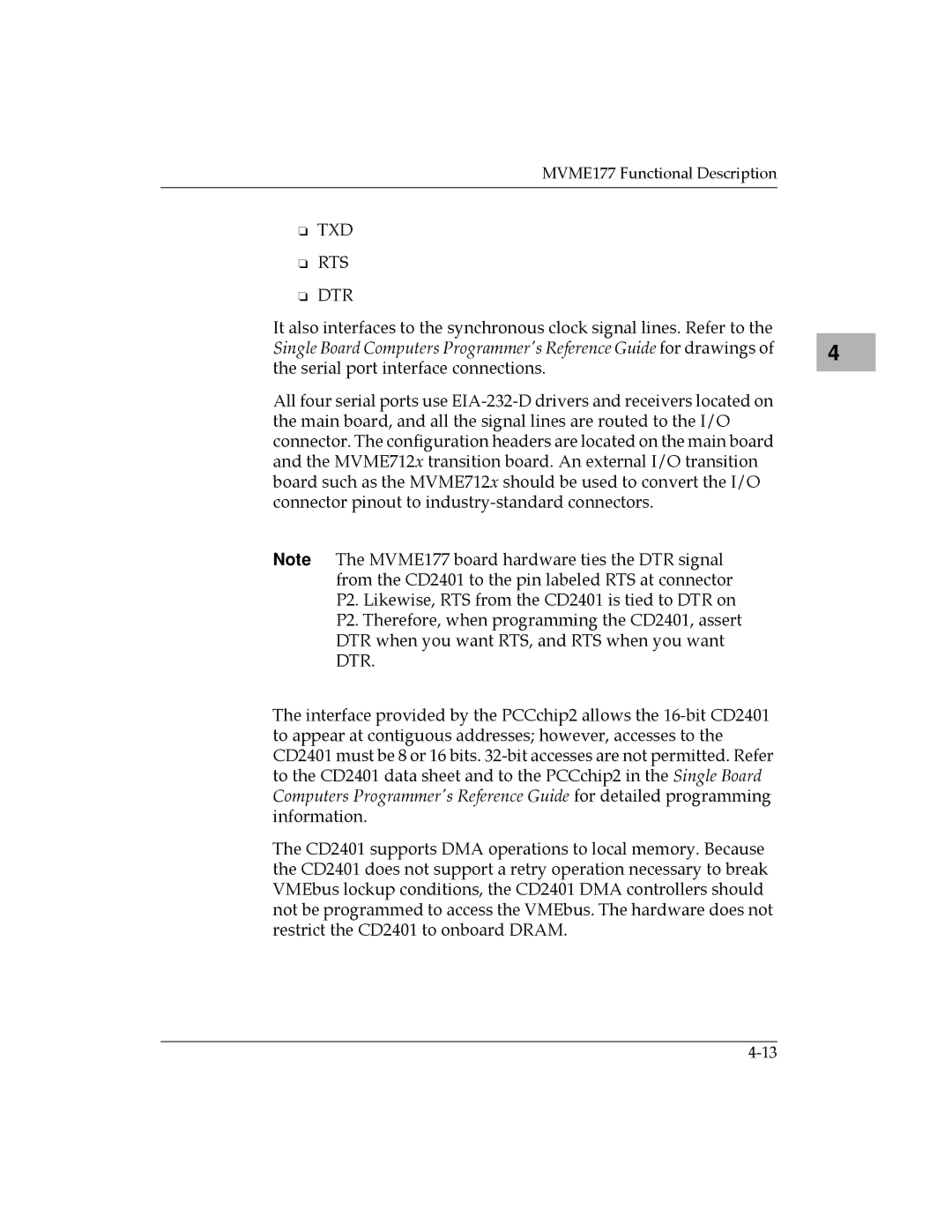
MVME177 Functional Description
❏TXD
❏RTS
❏DTR
It also interfaces to the synchronous clock signal lines. Refer to the Single Board Computers Programmer's Reference Guide for drawings of the serial port interface connections.
All four serial ports use
Note The MVME177 board hardware ties the DTR signal from the CD2401 to the pin labeled RTS at connector P2. Likewise, RTS from the CD2401 is tied to DTR on
P2. Therefore, when programming the CD2401, assert DTR when you want RTS, and RTS when you want DTR.
The interface provided by the PCCchip2 allows the
The CD2401 supports DMA operations to local memory. Because the CD2401 does not support a retry operation necessary to break VMEbus lockup conditions, the CD2401 DMA controllers should not be programmed to access the VMEbus. The hardware does not restrict the CD2401 to onboard DRAM.
4
